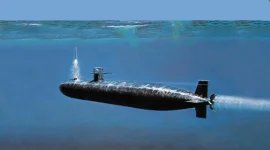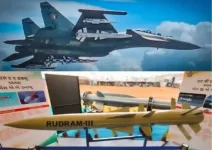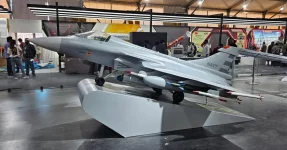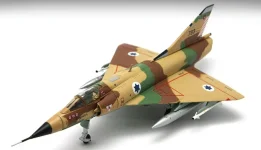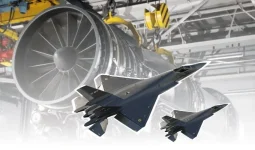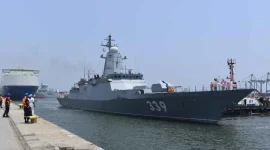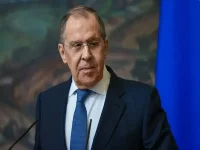- Views: 246
- Replies: 12
The AL-31F engine, manufactured by Russia's United Engine Corporation (UEC) NPO Saturn, is a vital component of India's Su-30 MKI fighter jets, which form a significant part of the Indian Air Force (IAF) fleet.
As India plans to operate these aircraft for potentially four more decades, the long-term maintenance and availability of these engines raise important questions about intellectual property rights (IPR), India's technological capabilities, and Russia's differing defence relationships with India and China.
A key issue is whether India's Hindustan Aeronautics Limited (HAL) can overcome Russian restrictions to independently support the Su-30 MKI fleet, especially considering Russia seems more protective of its engine technology with India compared to China.
Under the existing licence agreement for the Su-30 MKI programme, HAL assembles the AL-31F engines at its facility in Koraput, Odisha. While HAL locally produces a large portion (over 87%) of the engine components, critical elements known as "hot parts" – including turbine blades and combustion chambers requiring advanced metallurgy – are excluded from this arrangement.
These essential parts must be imported directly from Russia or manufactured using Russian materials and machinery, with no technology transfer allowing India to produce them independently. This structure ensures India's continued reliance on Russia for crucial spares and technical expertise for the engine's core sections.
China's interaction with the AL-31F engine presents a stark contrast. After initially purchasing the engine for its Su-27 and Su-30 fighters, China embarked on a successful reverse-engineering effort. This led to the development of its indigenous WS-10 Taihang engine by the Shenyang Aeroengine Research Institute.
Although the WS-10 initially faced performance challenges, persistent development means it now powers several Chinese fighter jets, including variants of the J-11, J-15, and J-16.
While Russia may have withheld certain metallurgical details from both nations, China either operated under less restrictive agreements or chose to disregard limitations, enabling it to create a domestic alternative.
Russia's seemingly more permissive stance towards China could be influenced by geopolitical calculations; China's rapidly advancing military industry represented potential competition, possibly encouraging Moscow to focus on immediate sales, whereas India's established dependence on Russian systems offered a more predictable, long-term partnership.
For India, successfully reverse-engineering the AL-31F would be a pathway to self-reliance, allowing HAL to manufacture essential spares and upgrades domestically. HAL possesses considerable experience, having assembled over 300 AL-31F engines since the programme's inception.
However, significant obstacles remain. The technology behind the "hot parts" is complex, particularly the manufacturing of single-crystal turbine blades that can endure extreme operational temperatures.
This requires specialised alloys and techniques, areas where Indian organisations like the Defence Metallurgical Research Laboratory (DMRL) and Mishra Dhatu Nigam Limited (Midhani) are still developing their capabilities, despite progress made on technologies for the indigenous Kaveri engine project. Replicating the AL-31F's proven performance without access to Russia's proprietary data presents a major technical challenge.
Furthermore, the technology transfer agreement between Russia and India strictly prohibits HAL from modifying or replicating the AL-31F design. Any attempt to bypass these contractual obligations could lead to serious legal and diplomatic friction, potentially damaging the long-standing Indo-Russian defence relationship at a sensitive time when India is also diversifying its defence procurements with Western partners.
Despite these hurdles, HAL could potentially explore developing a new engine inspired by the AL-31F but utilising Indian technology and materials, possibly drawing on experience with the AL-31FP variant (used in the Su-30 MKI) which includes thrust vectoring capabilities.
This approach might circumvent direct IPR infringement but would require substantial investment and a long development timeline, possibly exceeding a decade, leaving a potential support gap for the existing fleet in the meantime.
India's Su-30 MKI fleet, comprising over 260 aircraft, is set to remain the cornerstone of the IAF's combat capability well into the future, potentially until the 2060s, supported by planned upgrades under initiatives like the "Super Sukhoi" programme.
Ensuring the operational readiness of these jets necessitates a reliable supply of engines and spare parts. This is complicated by Russia's control over critical technology and added geopolitical uncertainties, such as the potential impact of the ongoing conflict in Ukraine on Russia's defence production and supply chains.
Currently, HAL's strategy involves maintaining the fleet through overhauls at the Koraput facility and attempting to build up a stockpile of necessary spares, though this is viewed as a temporary measure. While full reverse engineering presents difficulties, other options include expanding the domestic production of non-restricted components or negotiating revised technology transfer terms with Russia.
Looking further ahead, integrating a domestically developed engine like the Kaveri (once it matures sufficiently) or collaborating with Western engine manufacturers such as GE Aerospace or Safran are possibilities, although adapting a different engine type to the Su-30 MKI airframe would be a complex and costly undertaking.
The intellectual property surrounding the AL-31F is primarily protected not by easily expired patents (the original design dates back to the 1980s, meaning initial patents would likely have lapsed) but by closely guarded trade secrets.
Russia maintains control through proprietary knowledge encompassing specific metallurgical processes, manufacturing techniques, and associated software, enforced via the licensing agreements with India. It is this control over essential know-how, rather than patents alone, that underpins India's ongoing technological dependence for this critical defence asset.

